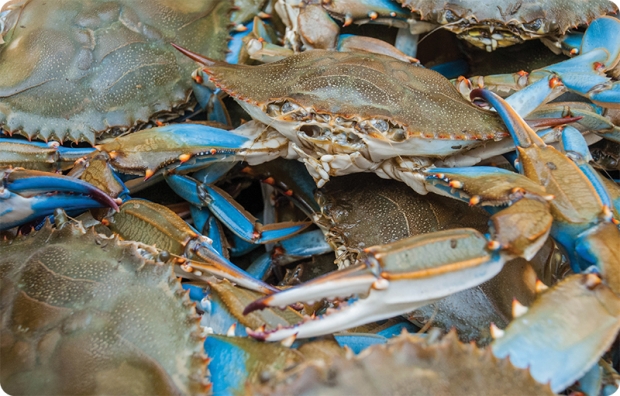Blue Crab (Callinectes sapidus) - With an apt scientific name meaning "beautiful savory swimmer," the blue crab is a celebrated and delectable local crustacean

- An omnivore, they eat both plants and animals. They will feed on nearly anything they can find, sometimes even other blue crabs.
- Males and females are easily distinguished by the shape of the abdomen (known as the “apron”) and by color differences in the claws. Males are called “jimmies” and mature females are called “sooks.”
- Males may mate several times a season, while females mate only once in their lifetimes.
- Little River’s World Famous Blue Crab Festival will celebrate its 39th year in 2020, and has been rescheduled for October 10 & 11.
- One popular way to catch blue crabs is by “chicken necking.” This involves tying string to a raw chicken neck and dropping it into the water. When the line pulls tight, it is slowly pulled back up to catch the crab with a net.
- Their blue hue stems from a number of pigments in the shell, including alpha-crustacyanin and astaxanthin. When cooked, the alpha-crustacyanin breaks down, which turns the crab a bright orange-red color.